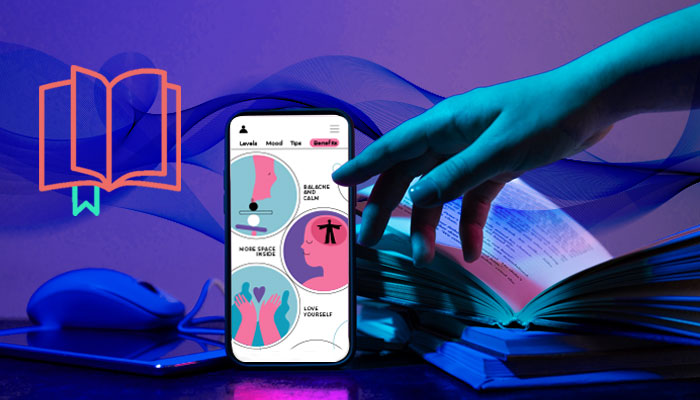Story First, Design Second

Stories – We’ve all heard them since our childhoods and have fond memories of a close one narrating it to us. From hearing captivating stories during our childhood to creating some interesting ones with our friends and family over the years, stories are indeed an integral part of the human experience and help bring in a sense of emotions and attachment to what could otherwise simply be written down to being a reasonable turn of events or a set of experiences.
In the realm of business, storytelling possesses a remarkable power to engage human emotions and connect with target audiences. By incorporating storytelling techniques into Product and Service Design, businesses can create immersive experiences that elicit emotional responses, thereby forging deeper connections between their target audiences and the Products or Services they seek to sell.
Well-thought-out integration of storytelling within Product and Service Design has truly become indispensable for businesses seeking genuine connections with their customers.
The clever integration of storytelling techniques into the design process helps businesses effectively communicate the values and standards that their brand seeks to represent, thus helping create a compelling and intriguing narrative regarding their brand amongst their final audience, which ultimately results in a positively long-lasting impact.
Successful incorporation of storytelling techniques into Product and Service design will require meticulous planning and skillful execution of the same. It begins with a thorough understanding of the target audience, their needs, desires, and aspirations. This deep understanding serves as the foundation for developing narratives that personally resonate with the audience. Storytelling should be able to seamlessly integrate itself with the visual elements, user interactions, and overall user experience, ensuring cohesiveness and immersiveness in the final design.
Authenticity and consistency play vital roles when leveraging storytelling in design. The narrative must harmoniously align with the brand’s identity. By weaving a consistent and authentic story throughout the design, businesses can establish a strong emotional connection, thus cultivating brand loyalty within their customer base. This approach not only enhances engagement but also contributes to overall success.
In this blog, we will further explore the best strategies to ensure seamless integration of storytelling techniques into Product and Service Design.
Best Practices to Incorporate Storytelling Techniques

Incorporating storytelling techniques into the design process of your product or service requires thoughtful consideration of your target audience.
Understand the client :
Understanding the client’s vision, mission, and pain points goes a long way in establishing a bond with the target audience. This understanding enables the crafting of a narrative that directly resonates with the intended audience, aligning it with the client’s expectations and effectively conveying the intended use case of the product at hand.
Use good visuals:
Seeing is believing, and visuals can help to a great extent in enhancing the storytelling experience by facilitating comprehension and building trust on a subconscious level. Visual tools such as Infographics, illustrations, and user journey maps are extremely impactful aids that can be used to further the narrative.
The use of the right visual tool can help the audience to better grasp the information they are presented with, thus amplifying the effectiveness of the storytelling approach. The synergy between visual elements and the narrative elevates engagement and fosters a deeper understanding of the underlying problems.
Set the tone:
Maintaining a cool, composed, and patient tone is of paramount importance when addressing issues presented within the narrative. An anxious or rushed voice evokes feelings of fear, uncertainty, and lack of confidence within the audience, which is extremely undesirable when trying to retain attention from the audience. Speak in a calm and confident tone, as this will help cultivate an environment conducive to ensuring engagement from within the audience. Avoid a hurried delivery of content by all means possible.
When incorporating storytelling techniques into product or service design, it’s important to customize the narrative to suit the target audience and meet the client’s expectations. By combining visual elements with the storytelling approach, we can enhance understanding and connection. Additionally, maintaining a calm and patient tone during the delivery of the narrative encourages engagement and increases the effectiveness of the storytelling experience.
Resonating with the Audience and measuring success through the same
The success of a story lies in its ability to connect with the audience. To achieve resonance through storytelling, it is crucial to understand the audience’s needs and challenges. This can be accomplished by conducting user interviews and extensive research, which allows us to immerse ourselves in their world and uncover valuable insights that shape our storytelling approach. By experimenting with different storytelling methods and evaluating audience responses, we can identify the most effective way to communicate the solution. Adapting the storytelling style to align with the audience’s preferences and expectations enhances the design experience, resulting in a stronger connection.
To truly resonate through storytelling techniques, a deep understanding of the target audience and their challenges is essential. Through experimentation, evaluation, and adaptation, we can refine our storytelling approach and enhance engagement. One particular project demonstrated the transformative impact of integrating storytelling, highlighting its value in the design process. By following these steps, we can create a more coherent and engaging narrative that connects with our audience on a deeper level.
Ensuring the Balance
While storytelling plays a significant role in product and service design, it is crucial to strike a balance and avoid overpowering the design itself. Clients often eagerly anticipate seeing the design progress and may become unhappy if the focus remains primarily on storytelling. To ensure a harmonious balance, we ideally recommend an allocation of approximately 35% of the overall project timeline to storytelling and not more.
By incorporating storytelling within the designated timeline, you can maintain a steady pace in both design development and narrative creation. Such an integrated approach allows the client to see tangible progress while simultaneously understanding the value that storytelling contributes towards enhancing the final product.
Conveying the Value of Storytelling to Clients
In one project, our team encountered a client initially disinterested in the user journey and findings from interviews. However, during the design development phase, we strategically employed storytelling to bridge the identified issues and proposed solutions. This approach transformed the client’s perspective, as they witnessed how storytelling elevated their product’s marketability. By crafting a compelling narrative that connected user insights with the design solution, we instilled confidence in the client, thus enabling them to recognize the value of addressing the identified problems. The power of storytelling slowly but surely became evident, thus conveying the importance of integrating user-centric solutions.

Conclusion
Storytelling holds a remarkable power in connecting with audiences and enhancing the design process for products and services. From childhood memories to the business realm, stories have the ability to evoke emotions and foster deeper connections. Businesses can create immersive experiences that resonate with their target audiences simply by incorporating storytelling techniques.
Much like any other practice in Product and Service design, the effectiveness of Storytelling is only as good as its execution. Successful execution of storytelling would require an in-depth understanding of the client’s visions, mission, and pain points, along with effective implementation of visual and aural tools to ensure that the target audience truly resonates with the story being told.
Ensuring a balance is crucial, as our goal must be to ensure that storytelling enhances the design, instead of overpowering it. A reasonable timeline may be allotted for storytelling, thus allowing for steady progress in both design development as well as storytelling. Businesses can convey the value of storytelling to clients and instill their confidence in the same by using tools to demonstrate how it bridges identified issues and propels marketability.
Seamlessly integrating storytelling into design ultimately deepens connections, enhances engagement, and cultivates brand loyalty. Understanding the audience, and experimenting with tools can help create resonant narratives. Embracing storytelling ultimately helps enrich Product and Service design.

To make sure your Story connects with the users it is important to connect with them – From Empathy to Ideation: The Elements of Design Thinking







